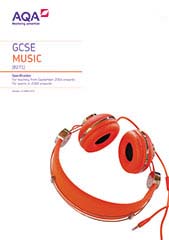3.3 Composing music
Students must learn how to develop musical ideas, including extending and manipulating musical ideas, and compose music that is musically convincing through two compositions. One must be in response to an externally set brief (Composition 1) and the other a free composition (Composition 2).
The combined duration of the compositions must be a minimum of three minutes.
Compositions can be composed in any style or genre to best reflect the skills, strengths and interests of the individual students.
Both compositions must be assessed on the student’s ability to demonstrate:- Creative and effective selection and use of musical elements
- Appropriate selection and use of musical elements (to the compositional intention)
- Technical and expressive control in the use of musical elements.
- at least two of rhythm, metre, texture, melody, structure, form
- at least two of harmony, tonality, timbre, dynamics, phrasing, articulation.
Please also refer to the full tables of musical elements in Subject content.
Students must be able to compose using methods appropriate to the style/genre of their composition and may use a combination of vocal/instrumental and technology. This could include the use of score writing software, sequencing software, studio multi-tracking or traditional techniques including hand written notation and working through improvisation.
Documenting the composition
Programme note
Students must write a Programme note of approximately 150 words for each composition, which clearly informs the assessor of the compositional intention, including the intended audience/occasion. Students must also identify the types of musical element selected and provide details of any software and hardware used in their compositional process.
In all cases the audio recording of the composition and Programme note must be accompanied by one or more of the following documents:
- staff notated score
- lead sheet
- aural guide.
Please refer to Component 3: Composing music assessment grid for information about how to mark compositions.
